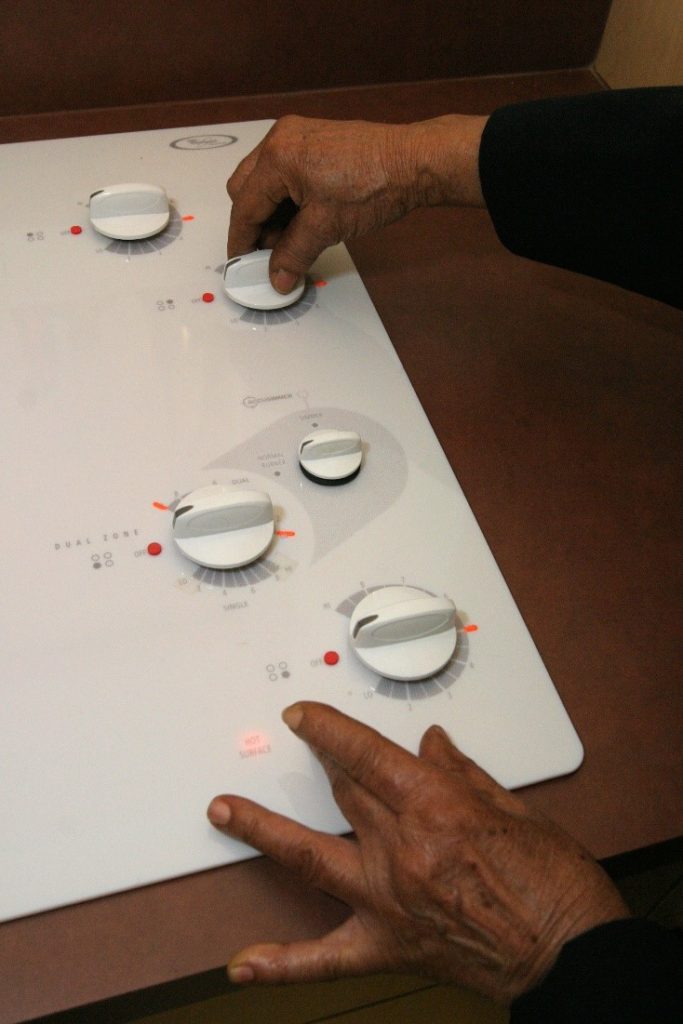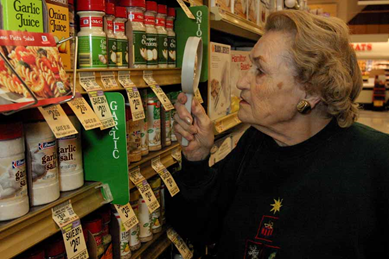I don’t know about you, but I’m always looking for a good bargain when shopping. With the added stress of these uncertain times, it seems like more and more people are looking for ways to save money on groceries. Being blind poses some challenges to things like looking at the weekly newspaper or mailer ads to compare prices and couponing. On top of that, traveling around town to get a “bargain” has the added complication of arranging for a driver or catching a ride with a friend or family member.
I hope this post will offer some useful guidance and highlight tricks and tips you can use before, during, and after shopping.
Step 1: Getting Started, Taking a Life Inventory
Start formulating a plan of action. Think about your current living situation, including such variables as financial resources, family support, time, and what space you have available to store food. The thought-provoking questions listed below will help you create a plan:
Do I need a budget? Establishing a budget is essential. It is recommended that approximately 10% to 12% of your take home pay should be spent on food. This does not include dining out or personal care products frequently bought at the grocery store. It is important to have access to a budget in a format which you can read. You can find resources in the APH Product Catalog.
Should I buy the best cuts of meat and named brands? If you are a meat eater, think about what cuts of meat you like. Chicken and turkey are normally less expensive than red meat. You can use chicken thighs instead of breasts, ground chuck in place of sirloin, and pork loin rather than pork chops. Generic brands are always more cost effective, and usually just as good. Obviously, you can make these determinations for your own budget and needs.
Do I have a support system to help with shopping? While you can certainly shop independently, having family members or friends provide occasional assistance and transportation can be extremely helpful. You may find it difficult to ask for help, but chances are your friends and family won’t mind and there are many ways to return the favor. Check out the post, “Independence Versus Interdependence – VisionAware” for some suggestions.
Do I have time to cook? Meal preparation can be time consuming. An effective strategy I use is to allow one day for cooking all meals in advance, and then freeze for use throughout the week or for the future. This technique is both cost efficient and healthy. You can also cook daily and warm up leftovers for a couple of extra meals as well. Learn what works for your lifestyle.
Do I have enough storage space? Buying in bulk depends upon your storage space and how often you will use the item in question. Unless you can freeze foods, consider avoiding purchasing perishable items in bulk. However, if you have enough freezer capacity, one way I save money is by purchasing meat on sale in larger quantities. Then I divide the meat into smaller portions, storing in freezer bags or containers, and freezing. You can find more information in our article, “Food Storage After COVID-19 – VisionAware.”
 Marked Canned Goods
Marked Canned Goods
Can I cook safely with limited or no vision? I do! You can absolutely prepare nutritious and delicious meals with alternative techniques and practice. Training and adaptive equipment are available to enable you to perform every skill involved in meal preparation. With time and practice, you can learn techniques to continue to cook or, if you have never cooked, now is a great time to learn! Contact your nearest agency serving blind and low vision to enquire about training. Vision Aware has many blogs related to cooking and home management. Also, Hadley Institute for the Blind and Visually Impaired offers a wide range of on-line resources and MSU OIB-TAC provides Lessons for Learning for people new to vision loss (see links below).
 Stove with Raised Markings
Stove with Raised Markings
Step 2: Preparing to Go to the Grocery
Arrange Transportation: If you live in walking distance to a store or have access to a ride terrific! Of course, it is possible to take fixed route transportation on a bus, para-transit, which comes to your door, a shared ride such as Uber or Lyft, or a taxi cab. However, if you use public transportation, you will need to put more time and effort into your planning since you can only carry a limited amount of groceries home with you.
Meal Planning: It’s a good idea to have a meal plan in mind before making a grocery list. For example, I start with an inventory of my pantry, refrigerator and freezer and use the ingredients I have available to start planning. Consider things like “Meatless Monday” or “Taco Tuesday.” Also consider family favorite meals and start a rotation. Chat with friends and swap recipes. A meal plan can dramatically reduce your cost at the store!
Prepare A Grocery List: I use my meal plan to help prepare an accessible grocery list. Both the meal plan and grocery list need to be in a format you can read (large print, braille, or recording). The blog “What’s for Dinner” has many ideas for meal planning and grocery lists.
Gather Equipment: In addition to having your grocery list in a readable format, be sure to take low vision and blindness related equipment such as a magnifier, large print or talking calculator, or perhaps an abacus. If florescent lights give you a headache, take your indoor sunglasses. Don’t forget your white cane if you use one. Note: if you do not use a white cane and are having trouble getting around, consider learning to use one through a qualified orientation and mobility instructor.
Fuel Up: Never leave home on an empty stomach. I find I always spend more and buy items not on my list when shopping while hungry or thirsty.
Step 3: At the Store
 Woman Using Magnifier to Look at Canned Goods
Woman Using Magnifier to Look at Canned Goods
Shopping Assistance: If you will be shopping alone and will need assistance at the store, you can call ahead and ask if a store employee is available to shop with you.
Stick to Your List: I find that a good practice is to only purchase the items on your list. It can be very tempting to make an impulse buy, especially in the checkout lane.
Strategize the Layout of the Store: I do most of my shopping on the perimeter of the store. There I find almost everything I need. When traveling the center aisles, I look for what I need at the top or bottom of the shelves. The most expensive items are usually placed at eye level.
Keep a Running Total: Use your accessible calculator, smart phone, or abacus to keep a running total of what you are spending.
Step 4: Storage and Labeling
You are not finished yet! Now it is time to start putting all of your purchases away. VisionAware has suggestions for food storage, and accessible labeling. Creative labeling and storage containers can help you find items easily. Accessible labeling including expiration dates is essential.
Goal:
Employ at least two of the money saving strategies listed above. Keep the money you have saved in an envelope or special account. Then you can use your savings to buy something like a small electric appliance or another treat from your wish list. A recent post “Cuttin’ Up in the Kitchen” has some great ideas to consider.
Remember that our life situation is ever evolving. As a life-long learner you can employ strategies that will allow you to save one dime at a time. That amounts to a lot over our lifetimes! Happy shopping!
Resources:
Curriculum | OIB-TAC (oib-tac.org)-Lessons for Learning Including Food Preparation
www.eatingwell.com
Cooking Series | Hadley